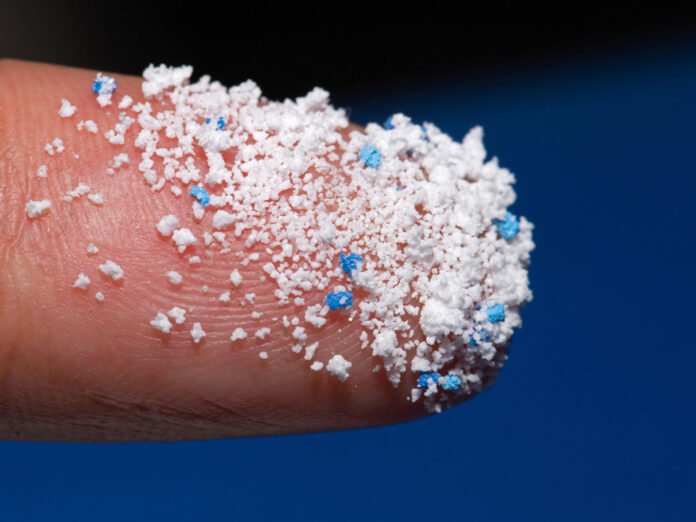Recent studies reveal that people consume between 39,000 to 52,000 microplastics annually. These tiny particles are prevalent due to environmental pollution and their presence in the air and food. Dr. Urvi Maheshwari, an internal medicine expert at Zynova Shalby Hospital in Mumbai, emphasizes the importance of addressing this issue early to maintain good health.
Microplastics, the small fragments of plastic pollution, infiltrate our bodies through various sources. They are found in drinking water, food, and even the air we breathe. Dr. Maheshwari stresses that the impact of these particles on human health is profound. As they accumulate in our bodies, they can disrupt normal physiological functions and contribute to a range of health issues.
Ayurvedic practitioner Dr. Dimple Jangda highlights several serious health risks associated with microplastic consumption. These particles are known to cause endocrine disruption, which affects hormone balance. Hormonal imbalances can lead to various health problems, including reproductive issues and metabolic disorders. Microplastics can also increase the risk of certain cancers, as they may contain harmful chemicals that interfere with cellular processes.
The impact of microplastics on nutrition and metabolism is also a concern. These particles can interfere with the absorption of essential nutrients, leading to deficiencies and compromised health. They disrupt the body’s ability to process nutrients effectively, which can have long-term consequences for overall well-being.
Neurodevelopment is another area affected by microplastics. Studies suggest that these particles can influence brain function and development. Exposure to microplastics has been linked to neurological issues and cognitive impairments. This poses a significant risk, particularly for children whose brains are still developing.
Reproductive toxicity is another severe consequence of microplastic consumption. These particles can affect reproductive health, potentially leading to fertility issues and developmental problems in offspring. The presence of microplastics in the body raises concerns about long-term reproductive health and the ability to conceive.
Dr. Maheshwari advises making changes as soon as possible to mitigate the effects of microplastic exposure. Reducing the intake of plastic-contaminated foods and beverages is crucial. Opting for fresh, unprocessed foods and using alternatives to plastic packaging can help minimize exposure. Additionally, improving air quality and reducing pollution can contribute to lowering the intake of microplastics.
As awareness grows about the health risks associated with microplastics, there is an increasing call for action. Governments and organizations are working to address plastic pollution and its impact on health. Efforts to reduce plastic use, improve waste management, and develop safer alternatives are essential in combating this issue.
The annual consumption of 39,000 to 52,000 microplastics poses significant health risks. From endocrine disruption to increased cancer risk and reproductive toxicity, these tiny particles can have serious effects on the body. Dr. Maheshwari and Dr. Jangda emphasize the need for immediate changes to reduce microplastic exposure and protect health. As research continues, it is crucial for individuals and communities to take proactive steps to minimize plastic consumption and its associated risks.
Microplastics, though tiny, have become a significant health concern. These particles, which can be as small as a few micrometers, are pervasive in our environment. They infiltrate our bodies through food, water, and air. The widespread presence of microplastics poses a growing threat to human health.
Recent findings suggest that microplastics have a range of adverse effects on the human body. They can accumulate in various organs and tissues, potentially causing long-term damage. Research indicates that these particles may release toxic chemicals as they break down, contributing to their harmful impact. The accumulation of microplastics in the body can lead to inflammation and oxidative stress, which are linked to several chronic diseases.
One of the primary concerns with microplastics is their potential to disrupt the endocrine system. The endocrine system regulates hormones that are crucial for many bodily functions. When microplastics interfere with this system, they can lead to hormonal imbalances, which may result in reproductive issues, thyroid disorders, and metabolic disturbances. For example, chemicals associated with microplastics have been shown to affect estrogen levels, which can have a ripple effect on overall health.
In addition to endocrine disruption, microplastics can affect the digestive system. When ingested, these particles can irritate the gastrointestinal tract, potentially leading to conditions such as gastritis or irritable bowel syndrome. The impact on digestion can affect nutrient absorption and overall gut health, further complicating health outcomes.
The presence of microplastics in the environment also contributes to their presence in the food chain. As animals ingest microplastics, they accumulate in their tissues. When humans consume these animals or animal products, they inadvertently consume microplastics as well. This cycle exacerbates the issue, making it difficult to escape exposure even with careful dietary choices.
Moreover, microplastics have been found to affect lung health. Inhalation of airborne microplastics can lead to respiratory issues, including inflammation and reduced lung function. Studies suggest that these particles can penetrate deep into the respiratory system, potentially leading to conditions such as asthma or chronic obstructive pulmonary disease (COPD).
Addressing the issue of microplastic contamination requires a multi-faceted approach. Reducing plastic waste and improving waste management systems are crucial steps in preventing microplastics from entering the environment. Additionally, individuals can take measures to reduce their own exposure, such as using less plastic and choosing products with minimal packaging.
Ongoing research into the health effects of microplastics is essential for understanding the full scope of their impact. Scientists are working to identify the specific mechanisms through which microplastics affect human health and to develop strategies for mitigating their effects. Public awareness and advocacy also play a vital role in driving changes that can help address this environmental and health challenge.

